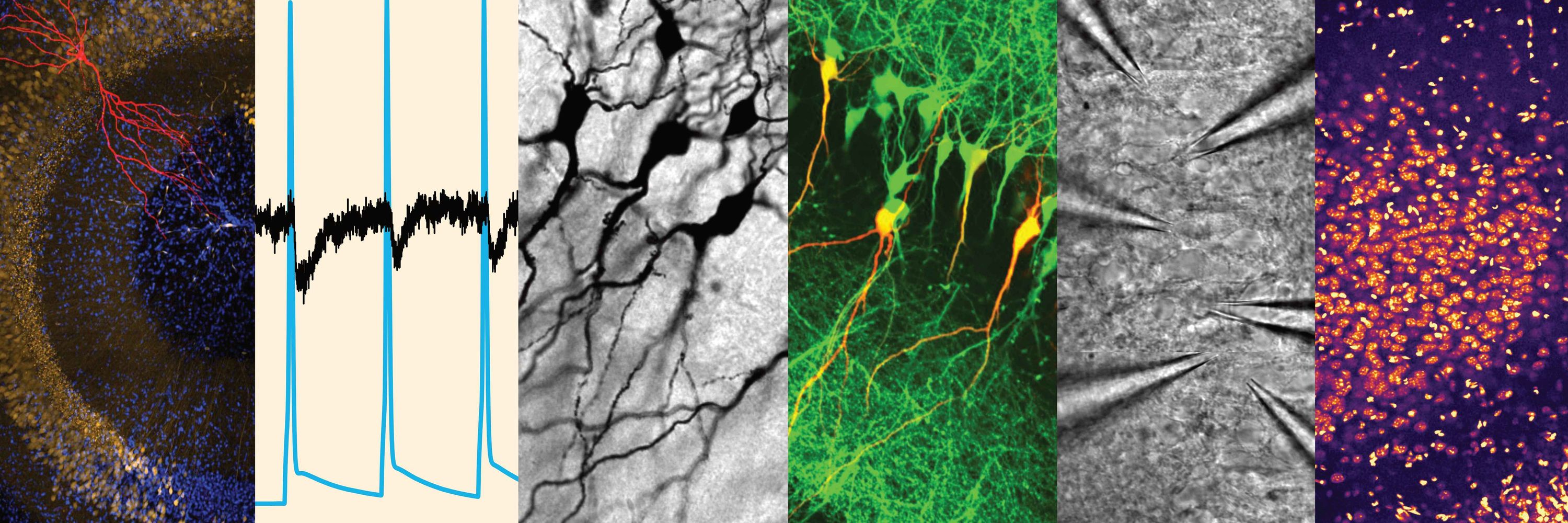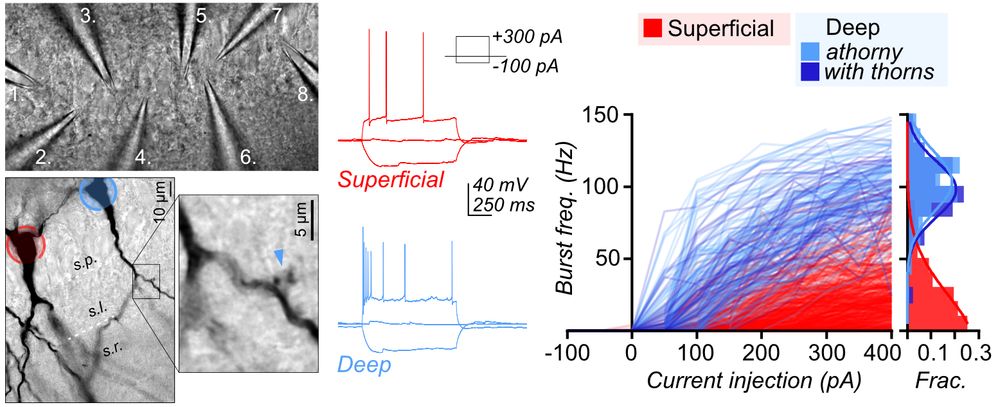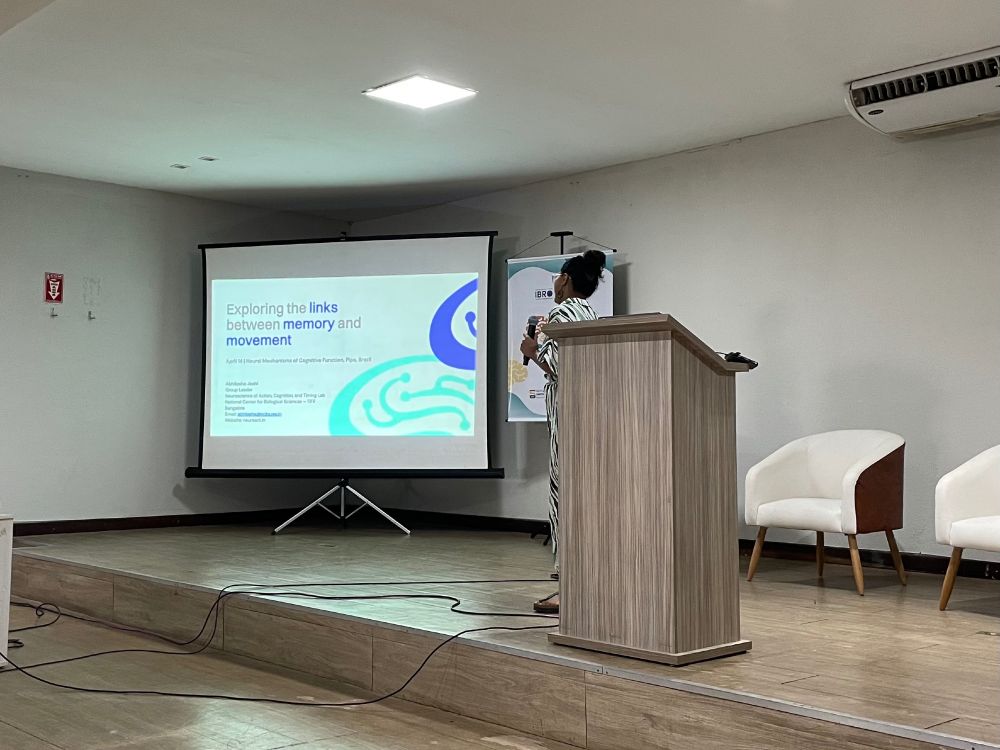
Jake Watson
@jakefwatson.bsky.social
Neurophysiologist @ ISTAustria
Synapses, microcircuits, hippocampus.
Google Scholar: https://bit.ly/jakefwatson
Research summary: www.synapticarrangements.org
Synapses, microcircuits, hippocampus.
Google Scholar: https://bit.ly/jakefwatson
Research summary: www.synapticarrangements.org
Inhibitory wiring also had a surprise. Spontaneous GABAergic input was strikingly coincident on PNs of the same subclass, suggesting specific wiring of interneurons into each PN type - for layer-specific control! @zhihaozheng.bsky.social has now visualized this wiring in his beautiful connectomics

August 2, 2025 at 2:25 PM
Inhibitory wiring also had a surprise. Spontaneous GABAergic input was strikingly coincident on PNs of the same subclass, suggesting specific wiring of interneurons into each PN type - for layer-specific control! @zhihaozheng.bsky.social has now visualized this wiring in his beautiful connectomics
Deep and superficial PNs had a surprise in their recurrent connectivity: superficial PNs connect broadly, but deep PNs show little local connectivity back to superficial cells. This suggests that deep PNs form their own subnetwork, perhaps 'associating the associations' made in superficial CA3..

August 2, 2025 at 2:25 PM
Deep and superficial PNs had a surprise in their recurrent connectivity: superficial PNs connect broadly, but deep PNs show little local connectivity back to superficial cells. This suggests that deep PNs form their own subnetwork, perhaps 'associating the associations' made in superficial CA3..
Across the brain, PNs show a lot of heterogeneity. In CA3 it’s clearest on the deep-superficial axis, and we see 'deep bursting' PNs that have been shown before. From hundreds of recorded cells, these are clearly a distinct subclass in our hands, but are not strictly 'athorny' as has been suggested.

August 2, 2025 at 2:25 PM
Across the brain, PNs show a lot of heterogeneity. In CA3 it’s clearest on the deep-superficial axis, and we see 'deep bursting' PNs that have been shown before. From hundreds of recorded cells, these are clearly a distinct subclass in our hands, but are not strictly 'athorny' as has been suggested.
The Neural Mechanisms of Cognitive Function meeting in beautiful #Pipa has sadly come to an end, but this meeting has given me new faith that really fascinating and innovative science is fully compatible with a kind, considerate, and supportive atmosphere! #BeNiceAndEnjoyYourScience

April 16, 2025 at 2:22 PM
The Neural Mechanisms of Cognitive Function meeting in beautiful #Pipa has sadly come to an end, but this meeting has given me new faith that really fascinating and innovative science is fully compatible with a kind, considerate, and supportive atmosphere! #BeNiceAndEnjoyYourScience
And finally talk 20 was @rhythmicspikes.bsky.social herself presenting beautiful data asking really insightful questions on how brain activity is linked to location and movement during memory tasks!

April 14, 2025 at 7:57 PM
And finally talk 20 was @rhythmicspikes.bsky.social herself presenting beautiful data asking really insightful questions on how brain activity is linked to location and movement during memory tasks!
Possibly as exciting as the science - our view of.. ‘exploring brain function across species’ made the cover of Cell @cellpress.bsky.social
Arranged with local ingredients while walking on Gimsøy, Norway!
www.cell.com/cell/current
(and paper below)
Arranged with local ingredients while walking on Gimsøy, Norway!
www.cell.com/cell/current
(and paper below)

January 23, 2025 at 6:48 PM
Possibly as exciting as the science - our view of.. ‘exploring brain function across species’ made the cover of Cell @cellpress.bsky.social
Arranged with local ingredients while walking on Gimsøy, Norway!
www.cell.com/cell/current
(and paper below)
Arranged with local ingredients while walking on Gimsøy, Norway!
www.cell.com/cell/current
(and paper below)
With @mojtabart.bsky.social, we applied this to human tissue, and saw that human CA3 cells appear to receive 5 times more DG inputs than mouse cells do! This finding has a lot of potential for powering up our idea of hippocampal computations.

December 11, 2024 at 7:46 PM
With @mojtabart.bsky.social, we applied this to human tissue, and saw that human CA3 cells appear to receive 5 times more DG inputs than mouse cells do! This finding has a lot of potential for powering up our idea of hippocampal computations.
Using a Hopfield-like model, @acnavasolive.bsky.social showed that expanding brain size by increasing neuronal number (sparse connectivity) is far better for memory capacity than aiming for dense connectivity (and more inputs per cell). This has some interesting philosophy for brain scaling rules!

December 11, 2024 at 7:46 PM
Using a Hopfield-like model, @acnavasolive.bsky.social showed that expanding brain size by increasing neuronal number (sparse connectivity) is far better for memory capacity than aiming for dense connectivity (and more inputs per cell). This has some interesting philosophy for brain scaling rules!
We think this explains the connectivity and circuit scaling between brain areas - dense local circuits in neocortex, while hippocampal CA3 forms something like one big recurrent network - perfect for associating all the hippocampus’ incoming info. Circuits made to measure!

December 11, 2024 at 7:46 PM
We think this explains the connectivity and circuit scaling between brain areas - dense local circuits in neocortex, while hippocampal CA3 forms something like one big recurrent network - perfect for associating all the hippocampus’ incoming info. Circuits made to measure!
A bigger difference between human and mouse brains is the number of neurons. This has gone up by about 17 times in CA3! By (very) simple maths, our anatomy data predicts connectivity in a random recurrent network to be pretty much in line with what we record experimentally for CA3 across species.

December 11, 2024 at 7:46 PM
A bigger difference between human and mouse brains is the number of neurons. This has gone up by about 17 times in CA3! By (very) simple maths, our anatomy data predicts connectivity in a random recurrent network to be pretty much in line with what we record experimentally for CA3 across species.
As you may expect, human neurons were larger than mouse cells, but spine density was a lot lower, so the number of inputs from other neurons in the recurrent network doesn’t change so much. Low spine density and reliable synapses have been seen in other brain areas, so may be human circuit features

December 11, 2024 at 7:46 PM
As you may expect, human neurons were larger than mouse cells, but spine density was a lot lower, so the number of inputs from other neurons in the recurrent network doesn’t change so much. Low spine density and reliable synapses have been seen in other brain areas, so may be human circuit features
We had the first view on human hippocampal synaptic pairs, and they look slow and integrating as we would expect (perfect for associations!). However they were also much more reliable and precise than seen in rodent research.

December 11, 2024 at 7:46 PM
We had the first view on human hippocampal synaptic pairs, and they look slow and integrating as we would expect (perfect for associations!). However they were also much more reliable and precise than seen in rodent research.
To touch base with better characterised circuits, we recorded in neocortex and saw the same dense connectivity that @yangfanpeng.bsky.social, @alleninstitute.bsky.social and others see. In fact CA3 wasn’t just sparse, but gets sparser from mice to humans - opposite scaling to neocortical circuits!

December 11, 2024 at 7:46 PM
To touch base with better characterised circuits, we recorded in neocortex and saw the same dense connectivity that @yangfanpeng.bsky.social, @alleninstitute.bsky.social and others see. In fact CA3 wasn’t just sparse, but gets sparser from mice to humans - opposite scaling to neocortical circuits!
We explored CA3, which in theory stores and retrieves memories from interconnected ensembles of pyramidal neurons. With Victor Vargas-Barroso and Rebecca Morse, we looked for these networks using octopatch. From 8 patients and 56 slices we found just 10 connected pairs! (under 1% connectivity)..

December 11, 2024 at 7:46 PM
We explored CA3, which in theory stores and retrieves memories from interconnected ensembles of pyramidal neurons. With Victor Vargas-Barroso and Rebecca Morse, we looked for these networks using octopatch. From 8 patients and 56 slices we found just 10 connected pairs! (under 1% connectivity)..
In a fantastic collaboration with Prof Karl Rössler (MedUniWien), we applied multicell patch-clamp to human hippocampus resected from epilepsy patients. Some samples show sclerosis (disease-led cell loss), but many are perfectly intact. This is the closest to 'wildtype’ human physiology we can get..

December 11, 2024 at 7:46 PM
In a fantastic collaboration with Prof Karl Rössler (MedUniWien), we applied multicell patch-clamp to human hippocampus resected from epilepsy patients. Some samples show sclerosis (disease-led cell loss), but many are perfectly intact. This is the closest to 'wildtype’ human physiology we can get..
But not all is lost. We propose a way to detect the detection limit, allowing informed analysis of your data. With this we see that at CA1 synapses, most minis are below usual noise levels (<6 pA). So be careful in concluding specific changes, no matter how obvious they may seem.

October 27, 2024 at 8:12 PM
But not all is lost. We propose a way to detect the detection limit, allowing informed analysis of your data. With this we see that at CA1 synapses, most minis are below usual noise levels (<6 pA). So be careful in concluding specific changes, no matter how obvious they may seem.
We can confirm this on real-world recordings. Specifically changing mEPSC amplitudes by altering the driving force across the membrane shows up as a change in mEPSC frequency!

October 27, 2024 at 8:11 PM
We can confirm this on real-world recordings. Specifically changing mEPSC amplitudes by altering the driving force across the membrane shows up as a change in mEPSC frequency!
Most alarmingly - if we change our simulations to specifically increase the amplitude of input events, the main effect is an increase in detected frequency! So be very careful about concluding "specific" changes in mPSC amplitude or frequency...

October 27, 2024 at 8:11 PM
Most alarmingly - if we change our simulations to specifically increase the amplitude of input events, the main effect is an increase in detected frequency! So be very careful about concluding "specific" changes in mPSC amplitude or frequency...
Using simulated data, we see that even subtle changes in noise levels massively affect the 'measured' values. So if recordings don't all have the same noise levels, it would be easy to observe false changes.

October 27, 2024 at 8:10 PM
Using simulated data, we see that even subtle changes in noise levels massively affect the 'measured' values. So if recordings don't all have the same noise levels, it would be easy to observe false changes.
Recording synaptic minis (mEPSCs)? We have a new paper trying to better understand how recorded datasets match synaptic changes. In short, they don't..
More info below, and the preprint here:
biorxiv.org/content/10.1101/2024.10.26.620084v1
More info below, and the preprint here:
biorxiv.org/content/10.1101/2024.10.26.620084v1

October 27, 2024 at 8:09 PM
Recording synaptic minis (mEPSCs)? We have a new paper trying to better understand how recorded datasets match synaptic changes. In short, they don't..
More info below, and the preprint here:
biorxiv.org/content/10.1101/2024.10.26.620084v1
More info below, and the preprint here:
biorxiv.org/content/10.1101/2024.10.26.620084v1

